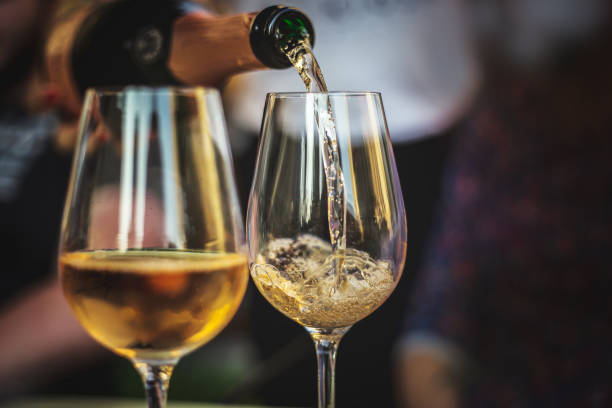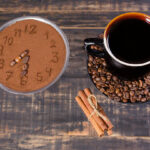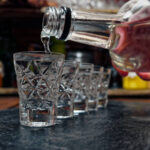Are you attending a big celebration like a wedding or anniversary and want to know how many glasses of champagne to a bottle? Having the right amount at your party is important because it can help keep your guests happy during the toast, while still making sure there’s some left over for later. This guide will walk you through the simple process of calculating how many glasses of bubbly you can get from each bottle in order to make sure everyone gets their fair share.
Contents
The Significance of Champagne Serving Sizes

Why pay attention to champagne serving sizes? After all, the celebratory drink encourages liberal consumption. However, several factors impact appropriate pour amounts. Serving sizes affect the experience, waste, and responsible consumption.
Consideration of serving sizes allows you to:
- Enhance enjoyment – The flavor profile appreciates when served in suitable glassware at the right temperature.
- Reduce waste – Pouring proper amounts minimizes unfinished bottles. Adapt servings to your occasion.
- Promote responsible consumption – Keep health advisories and intoxication risks in mind with serving amounts.
In addition to serving size, glass choice significantly influences the drinking experience. We’ll explore how champagne vessel shapes have radically evolved.
Champagne Varietals and Serving Sizes
Champagne encompasses several grape varietals, including Chardonnay, Pinot Noir, and Pinot Meunier. Bottles denote singular varietals or blends.
The varietal mix impacts:
- Flavor – From robust Pinot Noir to elegant Chardonnay.
- Sweetness – Dosage added before bottling affects dryness.
- Bubbles – Carbonation varies from delicate to bold.
These factors may nudge you towards smaller or larger pours. Fruity, sweeter varieties encourage slightly larger servings for fuller appreciation. Dry, sophisticated blends reward smaller sips.
Standard Champagne Bottle Servings
The standard bottle size for champagne is 750ml. This typically serves 6 glasses. Here’s a quick reference:
750ml bottle = Serving size of 125ml = ~6 glasses
This aligns with a standard glass pour of 5 ounces. It allows enjoying a bottle among 2-4 people with elegant moderation.
However, serving habits have shifted to fuller pours:
- 150ml – Provides 5 glasses per 750ml.
- 175ml – Yields around 4 glasses.
Pour preference, receptacle size, and occasion should steer your serving amounts.
Adjusting Serving Size
Consider adjusting pours based on these factors:
- Glass size – Flutes vs. wider wine glasses
- Pour technique – Heavy-handed or precise?
- Group size – More guests? Bump serving size.
- Occasion – Restrained weekday vs. festive celebration
While the 125ml guidance provides a starting point, feel free to adapt servings to your needs. Just stay mindful of responsible consumption.
Champagne Bottle Sizes: A Guide
Champagne bottles come in various sizes beyond the standard 750ml. Here’s a look at the range and recommended uses:
| Bottle Size | Number of Servings | Best Use Cases |
| Half-bottle (375ml) | 3 glasses | Single serving or appetizer pairing |
| 750ml (Standard) | 5-6 glasses | Couples, small groups |
| Magnum (1.5L) | 10-12 glasses | Dinner parties, events |
| Jeroboam (3L) | 20 glasses | Cocktail receptions, large parties |
| Methuselah (6L) | 40 glasses | Weddings, corporate events |
| Salmanazar (9L) | 60 glasses | Rare, luxury gift |
| Balthazar (12L) | 80 glasses | Galas, charity events |
| Nebuchadnezzar (15L) | 120 glasses | Lavish celebrations |
| Melchizedek (30L) | 240 glasses | Once in a lifetime events |
Larger format sizes like Jeroboam or Methuselah allow for generous pouring at big gatherings. For intimate gatherings, stick with smaller bottles.
Calculating Champagne Needs for Events
When hosting celebrations, estimate needed bottles by:
- Guest count – Allow ~5 glasses per 750ml bottle.
- Serving style – Toasts use less than full meal accompaniment.
- Duration – Account for early and late arrivals over a long party.
- Consumption – Celebratory occasions may boost drinking.
For example:
- 50 guests
- 2 glasses each for toasting
- Over 4 hours
You’ll need:
50 guests x 2 glasses each = 100 glasses
100 glasses / 5 per 750ml bottle = 20 bottles
Having some extra bottles is ideal to avoid running out too soon. Wasted champagne keeps better than disappointed guests.
The Evolution of Champagne Glassware
Champagne glass shapes radically evolved from thick-rimmed coupes to tall, slender flutes.
Coupe – The vintage wide bowl champagne glass has historical roots. Legends link it to Marie Antoinette’s breast shape. Early examples appeared in the 1700s. Coupes showcase champagne’s effervescence and bouquet. However, they rapidly lose carbonation.
Flute – The tall, narrow modern flute became popular in the 1950s. The shape preserves bubbles and highlights aromatics channeled upwards. But, the small opening restrains aroma expression.
Wine glass – In recent decades, wider bowl wine glasses became preferred vessels. These express aromas fully while retaining decent bubble preservation. The larger size affects pouring though – so take care.
Expanded glasses boost enjoyment but also intake. Remember to adjust pour amounts accordingly.
Serving Temperature and Preservation
Temperature affects tasting champagne. Serving it chilled, but not freezing, keeps it refreshing. ideal serving temperature is 45-50°F (7-10°C).
To chill quickly, immerse the bottle in ice for 20-30 minutes before serving. Use these tips for preservation:
- Fridge – Leftover champagne keeps 2-3 days refrigerated
- Freeze – Frozen in individual servings for several months
- Stopper – Special stoppers help retain effervescence
With open bottles, consume soon and refrigerate to preserve carbonation and flavor.
Environmental Considerations
Champagne carries environmental impacts to consider:
- Glass – Bottles are heavy and fragile for shipping
- Grapes – Growing champagne grapes requires pest management
- Winemaking – The traditional method generates lees waste
Seeking sustainable options helps reduce your champagne carbon footprint:
- Select lighter-weight bottles – Reduce glass required
- Choose organic or biodynamic winemaking – Environmentally responsible farming
- Reuse and recycle whenever possible
Cultural and Traditional Aspects

Beyond bubbles, champagne captivates us culturally:
- Celebratory drink – Popping bottles marks achievements or milestones
- Status symbol – Champagne connotes sophistication and luxury
- Traditional practices – Like sabering bottles open with a sword
- Notable events – Spraying on podiums or christening ships
Champagne’s aura of prestige and sophistication heightens the experience of enjoying it. Mark your own milestones with a memorable bottle.
Responsible Drinking and Health
While champagne signifies celebration, enjoy it in moderation:
- U.S. dietary guidelines define moderate drinking as 1 glass daily for women, 2 for men.
- The same alcohol content as wine or beer means champagne carries intoxication risks.
- Beware combining alcohol with medications or heath conditions.
Stay hydrated with water to avoid overconsumption. Appoint a designated driver when drinking more than 2 glasses.
Food Pairings with Champagne
Beyond aperitifs, champagne partners well with various foods. Complementary pairings include:
- Oysters – Briny oysters offset champagne’s sweetness
- Sushi – Bubbles refresh with raw fish flavors
- Popcorn – A surprising match, the saltiness counters acidity
- Chicken or veal – Light meats mirror delicate bubbles
- Strawberries – Fruit sweetness interplays with dry finishes
Food matching adds new dimensions to the champagne experience. Explore surprising combinations that accentuate its tasting notes.
Conclusion
With so many factors impacting champagne service, focus first on your occasion and group size. Then consider bottle formats, glassware, and pouring style. Aim for servings around 125ml, give or take based on your preferences. Wine glasses allow fuller appreciation of aromas and flavors. Store and serve your bubbly at 45-50°F for optimum enjoyment. Most importantly, be sure to responsibly savor your champagne during life’s grandest moments and smallest delights.

At the age of 25, chef and owner Michael Scognamiglio opened with confidence Bacco Italian restaurant.







